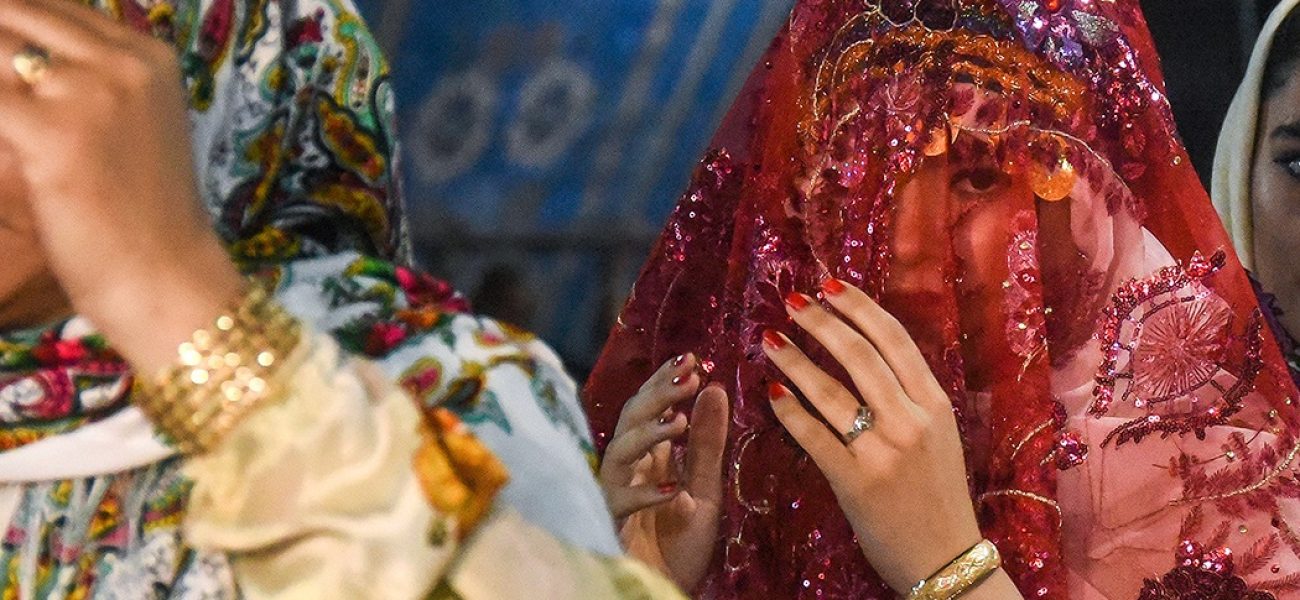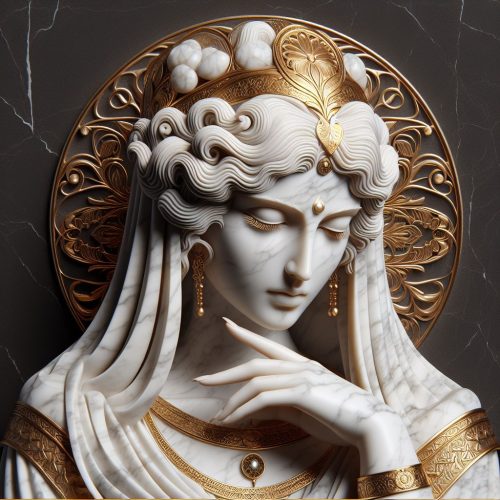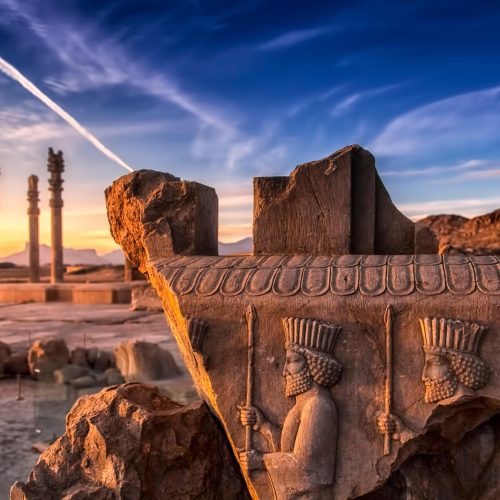The Kurmanj Kurds, also known as Northern Kurds, are a significant ethnic group within the broader Kurdish population in Iran. They inhabit the northern and northwestern regions of the country, primarily in the provinces of West Azerbaijan, Khorasan, and Kurdistan. This article provides a comprehensive scholarly examination of the Kurmanj Kurds, covering their demographics, historical background, cultural practices, socio-political dynamics, and contemporary challenges. By delving into these aspects, we aim to offer a nuanced understanding of this vital community’s role and identity within Iran’s diverse socio-cultural landscape.
Demographics
The Kurmanj Kurds are one of the largest Kurdish groups in Iran, with an estimated population of several hundred thousand. They predominantly reside in the provinces of West Azerbaijan and Khorasan, with smaller communities scattered across other regions. The population distribution reflects historical migration patterns and socio-political factors, including displacement due to conflict and economic opportunities.
Historical Background
Early History and Migration
The origins of the Kurmanj Kurds are deeply rooted in the ancient history of the Kurdish people. Historically, the Kurmanj have been a part of the broader Kurdish ethno-linguistic group, sharing a common heritage with Kurds from other regions. The Kurmanj Kurds have historically inhabited areas in the northern parts of present-day Iran, Turkey, and Iraq.
The early history of the Kurmanj Kurds is intertwined with the broader history of the Kurdish people, who have been present in the region for thousands of years. Ancient records from the Assyrian and Persian empires mention Kurdish tribes, suggesting their presence in the region long before the advent of Islam. The Kurmanj, like other Kurds, are believed to have descended from the ancient Median tribes, who played a significant role in the early history of the Iranian Plateau.
Migration patterns of the Kurmanj Kurds have been influenced by various factors, including invasions, political changes, and economic opportunities. Over the centuries, they have moved across the mountainous regions of Iran, Iraq, and Turkey, maintaining their distinct cultural and linguistic identity despite external pressures.
The Safavid and Qajar Eras
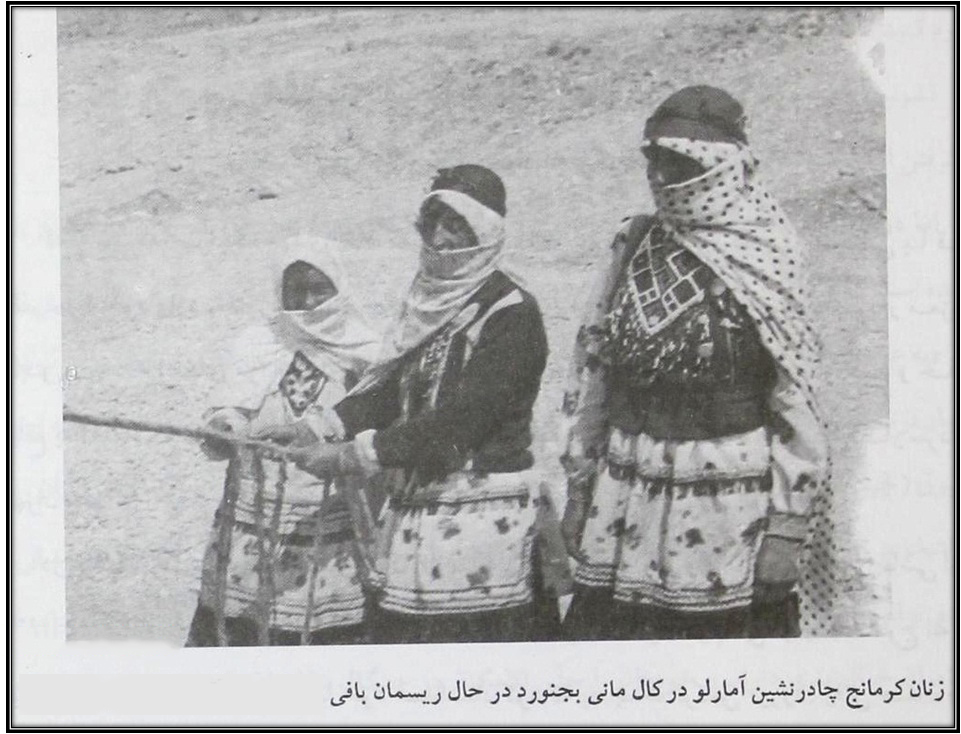
During the Safavid era (1501-1736), the Kurmanj Kurds were recognized for their martial prowess and were often employed as soldiers and guards. The Safavid rulers used Kurdish tribes, including the Kurmanj, to defend the empire’s borders against the Ottoman Empire. This period saw a significant movement of Kurdish populations, including the Kurmanj, between the Iranian and Ottoman territories.
The Safavid era was marked by a policy of leveraging the military skills of the Kurds to strengthen the empire’s defenses. Kurdish tribes were granted autonomy in return for their loyalty and military service. This arrangement allowed the Kurmanj Kurds to preserve their tribal structure and cultural practices while contributing to the Safavid military campaigns.
Under the Qajar dynasty (1789-1925), the Kurmanj Kurds faced varying degrees of autonomy and repression. The Qajar rulers implemented a policy of indirect rule, relying on tribal leaders to maintain order and collect taxes. However, this era also witnessed attempts to centralize power, leading to conflicts and resistance from Kurdish tribes, including the Kurmanj.
The Qajar period was characterized by a complex relationship between the central government and the Kurdish tribes. While some Kurdish leaders were integrated into the Qajar administrative system, others resisted centralization efforts, leading to periodic rebellions. The Kurmanj Kurds, like other Kurdish groups, navigated these challenges by balancing their autonomy with pragmatic alliances with the central authorities.
Modern Era and State Policies
The 20th century brought significant changes to the Kurmanj Kurds’ socio-political landscape. Following the establishment of the Pahlavi dynasty in 1925, Iran pursued a policy of centralization and modernization, which often marginalized ethnic minorities, including the Kurds. Reza Shah Pahlavi’s efforts to assimilate the Kurdish population included banning Kurdish language and culture, which fueled Kurdish nationalism and resistance.
Reza Shah’s modernization policies aimed to create a unified Iranian identity, often at the expense of ethnic diversity. Kurdish cultural practices were suppressed, and Kurdish leaders who resisted these policies were harshly dealt with. This period saw the emergence of Kurdish nationalist movements, seeking to preserve Kurdish identity and advocate for greater autonomy.
The Islamic Revolution of 1979 marked a turning point, as the new regime initially promised greater cultural and political rights for ethnic minorities. However, the subsequent Iran-Iraq War (1980-1988) and internal conflicts led to a more repressive approach towards Kurdish aspirations for autonomy. The Kurmanj Kurds, like other Kurdish groups, have faced varying degrees of political repression, cultural suppression, and economic marginalization in the post-revolutionary era.
The post-revolutionary period has been marked by a fluctuating relationship between the Iranian state and the Kurdish population. While the constitution of the Islamic Republic of Iran recognizes the rights of ethnic minorities, including the right to use their language and practice their culture, the implementation of these rights has been inconsistent. Kurdish regions, including those inhabited by the Kurmanj, have experienced periods of intense conflict and repression, particularly during and after the Iran-Iraq War.
The Kurmanj Kurds have continued to advocate for their cultural and political rights, often facing significant challenges from the state. The government’s approach towards Kurdish activism has varied, with periods of relative openness followed by crackdowns on Kurdish political movements. Despite these challenges, the Kurmanj Kurds have maintained their cultural identity and continued to contribute to the broader Kurdish struggle for recognition and rights.
Socio-Political Dynamics
Political Representation and Movements
The Kurmanj Kurds, like other Kurdish groups in Iran, have a history of political activism and resistance against central authority. The quest for greater autonomy and cultural rights has been a persistent theme in Kurdish political movements. Various Kurdish political parties and organizations, both legal and clandestine, have emerged over the years, advocating for Kurdish rights and representation.
The Islamic Republic’s constitution recognizes certain cultural rights for ethnic minorities, including the right to use their language in education and media. However, the implementation of these rights has been inconsistent, and many Kurdish activists argue that the state continues to marginalize Kurdish identity and suppress political dissent.
Socio-Economic Challenges
The Kurmanj Kurdish regions in Iran face significant socio-economic challenges, including underdevelopment, high unemployment rates, and limited access to education and healthcare services. Economic opportunities in these areas are often constrained by geographic isolation, inadequate infrastructure, and political neglect.
Agriculture remains a primary economic activity for many Kurmanj Kurds, with farming and livestock rearing being common occupations. However, traditional agricultural practices are increasingly under pressure from environmental changes, including water scarcity and soil degradation. Efforts to diversify the local economy through initiatives such as small-scale industries and tourism have had limited success due to systemic barriers.
Contemporary Developments and Future Prospects
Cultural Revitalization
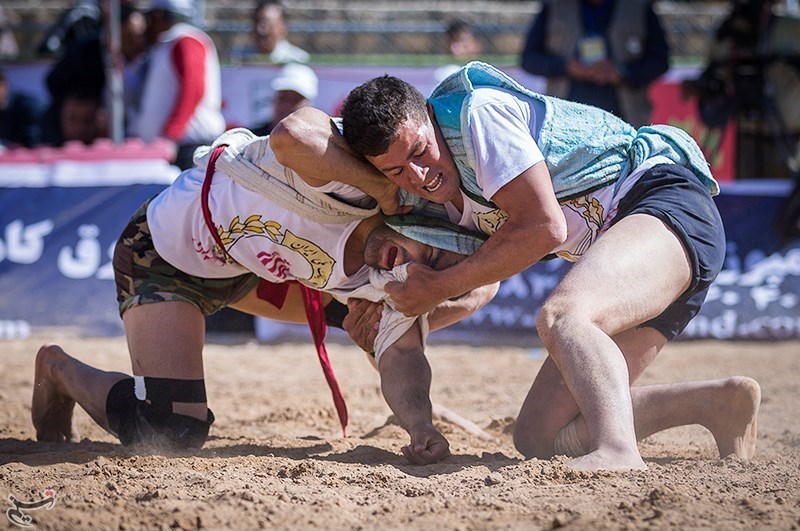
Despite the challenges, there has been a resurgence of interest in Kurdish culture and identity among the younger generation of Kurmanj Kurds. Cultural organizations, language courses, and artistic initiatives are playing a crucial role in revitalizing Kurdish heritage. Social media and digital platforms have become important tools for cultural exchange and advocacy, connecting Kurmanj Kurds with the global Kurdish diaspora.
Political Engagement
The political landscape for the Kurmanj Kurds continues to evolve, with increasing engagement in both local and national politics. Kurdish political parties and candidates, while facing numerous obstacles, have made strides in gaining representation in local councils and the Iranian parliament. This political participation is seen as a critical step towards addressing the socio-economic and cultural grievances of the Kurmanj Kurdish community.
Economic Development
Efforts to promote economic development in Kurdish regions are ongoing, with a focus on improving infrastructure, enhancing education and healthcare services, and creating job opportunities. Development projects aimed at boosting agriculture, small-scale industries, and tourism are essential for sustainable economic growth.
International aid and cooperation, particularly from Kurdish organizations and diaspora communities, play a significant role in supporting development initiatives. However, comprehensive and inclusive policies from the government are necessary to ensure meaningful and long-lasting improvements.
Cultural Practices
Language and Literature
The cultural practices of the Kurmanj Kurds are deeply rooted in their history, geography, and socio-political experiences. These practices encompass a wide array of traditions, customs, and social norms that have been preserved and passed down through generations. Understanding these cultural elements is crucial to appreciating the rich heritage and identity of the Kurmanj Kurds.
Language and Literature
Language is a cornerstone of Kurmanj Kurdish identity. The Kurmanji dialect of Kurdish, which the Kurmanj Kurds speak, is part of the Northwestern Iranian languages. It has a rich oral and written tradition, including folktales, epic poetry, and modern literature. Despite historical suppression, efforts to preserve and promote the Kurmanji language have been resilient.
In recent years, there has been a notable revival of Kurdish literature. Poets and writers in the Kurmanji dialect have gained recognition for their contributions to Kurdish culture. These literary works often explore themes of resistance, identity, and the socio-political struggles of the Kurdish people. Educational initiatives and language courses have also emerged to teach Kurmanji to younger generations, ensuring the continuity of linguistic heritage.
Music and Dance
Music and dance are integral to the cultural expression of the Kurmanj Kurds. Traditional Kurdish music, characterized by its unique rhythms and melodies, often features instruments such as the daf (a type of drum), tembûr (a string instrument), and the balaban (a woodwind instrument). These musical traditions are performed at various social gatherings, festivals, and ceremonies.
Dancing, particularly group dances known as “govend” or “halay,” is a significant aspect of Kurdish culture. These dances are performed in a circle, with participants holding hands and moving in unison to the rhythm of the music. Each dance has its own set of steps and movements, often telling a story or symbolizing unity and collective strength. Dance is not only a form of entertainment but also a means of preserving and expressing cultural identity.
Festivals and Celebrations
The Kurmanj Kurds celebrate numerous festivals and holidays that reflect their cultural heritage and religious beliefs. One of the most prominent celebrations is Newroz, the Kurdish New Year, which marks the arrival of spring and is celebrated around the vernal equinox. Newroz is a time for family gatherings, feasting, music, dancing, and various traditional rituals. It symbolizes renewal, hope, and the resilience of the Kurdish people.
Other significant festivals include the Yezidi New Year, known as “Sere Sal,” and various local celebrations that commemorate historical events or honor cultural heroes. These festivals are opportunities for the Kurmanj Kurds to come together as a community, reinforce social bonds, and celebrate their shared identity.
Traditional Clothing and Crafts
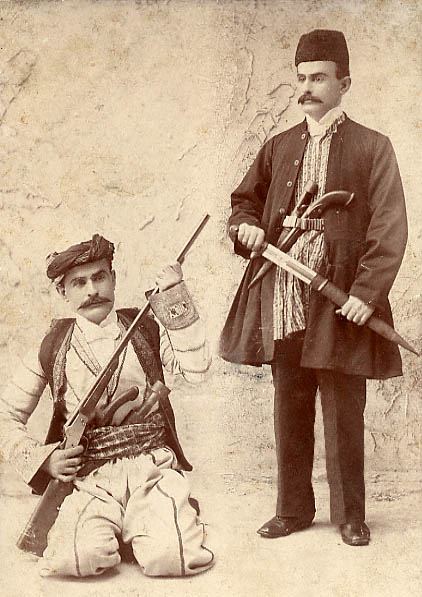
Traditional clothing is an important aspect of Kurmanj Kurdish culture, reflecting both regional styles and social status. Men typically wear garments such as “shalwar” (baggy trousers), “kris” (a wide belt), and “kulik” (a vest), while women wear colorful dresses adorned with intricate embroidery and accessories. Headscarves, known as “kras,” are commonly worn by women, often decorated with beads and other embellishments.
Craftsmanship, particularly in textiles and carpet weaving, is a longstanding tradition among the Kurmanj Kurds. Kurdish carpets and rugs are renowned for their intricate designs and high quality. Each pattern and color used in these textiles has specific meanings and cultural significance. Weaving is often a communal activity, with techniques and designs passed down through generations.
Cuisine
Kurmanj Kurdish cuisine reflects the agricultural and pastoral lifestyle of the community, incorporating a variety of locally sourced ingredients. Staple foods include grains such as wheat and barley, legumes, dairy products, and an array of fruits and vegetables. Meat, particularly lamb and goat, is a common component of many dishes.
Traditional dishes include “kebab” (grilled meat), “dolma” (stuffed vegetables), and “pilav” (rice dishes). Dairy products, such as yogurt and cheese, are also central to the diet. Bread, often baked in traditional clay ovens, accompanies most meals. The cuisine of the Kurmanj Kurds is not only a source of sustenance but also a reflection of their cultural heritage and connection to the land.
Social Structures and Norms
The social structure of the Kurmanj Kurds is traditionally organized around tribal affiliations and kinship ties. Tribal leaders, known as “aghas” or “sheikhs,” have historically played significant roles in community governance and conflict resolution. While modern influences have altered some aspects of this social organization, tribal affiliations remain an important part of Kurdish identity.
Community life is characterized by strong family bonds and a sense of collective responsibility. Social norms emphasize hospitality, respect for elders, and communal solidarity. Weddings, funerals, and other life-cycle events are important communal occasions, often marked by elaborate ceremonies and rituals that reinforce social cohesion.
Religion and Spirituality
The religious landscape of the Kurmanj Kurds is diverse, reflecting a range of beliefs and practices. While the majority are Sunni Muslims, there are also significant communities of Yezidis, Alevis, and followers of other faiths. Each of these religious groups has its own rituals, festivals, and spiritual practices that contribute to the cultural mosaic of the Kurmanj Kurds.
Yezidism, in particular, has a rich spiritual tradition with unique religious texts, sacred sites, and rituals. Yezidi festivals, such as the Feast of the Assembly, are significant cultural events that involve pilgrimages, communal prayers, and various religious ceremonies. The Yezidi religious heritage is an essential aspect of the cultural identity of Yezidi Kurmanj Kurds.
Oral Traditions and Folklore
Oral traditions and folklore play a crucial role in preserving the cultural heritage of the Kurmanj Kurds. Storytelling, proverbs, and folk tales are passed down through generations, often serving as moral lessons, historical narratives, and expressions of cultural values. Epic tales, such as the story of “Mem u Zin,” are central to Kurdish literary tradition, embodying themes of love, struggle, and resistance.
Folk songs, known as “dengbêj,” are another important aspect of oral tradition. These songs are often performed by skilled vocalists who sing about historical events, legendary figures, and everyday life. The art of dengbêj is not only a form of entertainment but also a means of preserving history and cultural memory.
The cultural practices of the Kurmanj Kurds are a testament to their rich heritage and enduring identity. Through language, music, dance, festivals, traditional crafts, cuisine, social norms, religious beliefs, and oral traditions, the Kurmanj Kurds maintain a vibrant cultural life that continues to evolve while staying rooted in historical traditions. Understanding and appreciating these cultural practices is essential for recognizing the unique contributions of the Kurmanj Kurds to the broader tapestry of human culture.
Socio-Political Dynamics
Political Representation and Movements
The Kurmanj Kurds, like other Kurdish groups in Iran, have a history of political activism and resistance against central authority. The quest for greater autonomy and cultural rights has been a persistent theme in Kurdish political movements. Various Kurdish political parties and organizations, both legal and clandestine, have emerged over the years, advocating for Kurdish rights and representation.
The Islamic Republic’s constitution recognizes certain cultural rights for ethnic minorities, including the right to use their language in education and media. However, the implementation of these rights has been inconsistent, and many Kurdish activists argue that the state continues to marginalize Kurdish identity and suppress political dissent.
Socio-Economic Challenges
The Kurmanj Kurdish regions in Iran face significant socio-economic challenges, including underdevelopment, high unemployment rates, and limited access to education and healthcare services. Economic opportunities in these areas are often constrained by geographic isolation, inadequate infrastructure, and political neglect.
Agriculture remains a primary economic activity for many Kurmanj Kurds, with farming and livestock rearing being common occupations. However, traditional agricultural practices are increasingly under pressure from environmental changes, including water scarcity and soil degradation. Efforts to diversify the local economy through initiatives such as small-scale industries and tourism have had limited success due to systemic barriers.
Contemporary Developments and Future Prospects
Cultural Revitalization
Despite the challenges, there has been a resurgence of interest in Kurdish culture and identity among the younger generation of Kurmanj Kurds. Cultural organizations, language courses, and artistic initiatives are playing a crucial role in revitalizing Kurdish heritage. Social media and digital platforms have become important tools for cultural exchange and advocacy, connecting Kurmanj Kurds with the global Kurdish diaspora.
Political Engagement
The political landscape for the Kurmanj Kurds continues to evolve, with increasing engagement in both local and national politics. Kurdish political parties and candidates, while facing numerous obstacles, have made strides in gaining representation in local councils and the Iranian parliament. This political participation is seen as a critical step towards addressing the socio-economic and cultural grievances of the Kurmanj Kurdish community.
Economic Development
Efforts to promote economic development in Kurdish regions are ongoing, with a focus on improving infrastructure, enhancing education and healthcare services, and creating job opportunities. Development projects aimed at boosting agriculture, small-scale industries, and tourism are essential for sustainable economic growth.
International aid and cooperation, particularly from Kurdish organizations and diaspora communities, play a significant role in supporting development initiatives. However, comprehensive and inclusive policies from the government are necessary to ensure meaningful and long-lasting improvements.
The Kurmanj Kurds of Iran represent a vibrant and resilient community with a rich cultural heritage and a history of political activism. Despite facing significant challenges, including political repression, socio-economic marginalization, and cultural suppression, the Kurmanj Kurds continue to strive for greater recognition and rights within the Iranian state.
Understanding the complexities of the Kurmanj Kurdish identity and their socio-political dynamics is essential for fostering inclusive and equitable policies. As Iran navigates its future, addressing the aspirations and grievances of the Kurmanj Kurds, along with other ethnic minorities, will be crucial for building a more just and harmonious society. Through continued cultural revitalization, political engagement, economic development, and human rights advocacy, the Kurmanj Kurds can contribute significantly to the diverse tapestry of Iran’s national identity.

